If you were at my Mary Blair workshop on July 12, 2025 at Historic Yellow Springs, welcome back to the World of Mary Blair! If you missed it, have no fear, our class notes are here! Let’s celebrate and learn from the amazing, colorful, pioneering, mid-century designer, illustrator, and art director Mary Blair.
The life and artistry of Mary Blair
What do South American folk art, anti-fascist diplomatic missions during World War Two, and theme park ride design have in common? If you guessed the life and artistry of Mary Blair, you’d be correct!
In the early 1940s, Mary Blair accompanied other artists along with Walt Disney on a diplomatic tour of South America—sponsored by the US government—meant to build goodwill with nations where Adolph Hitler’s influence threatened to take hold.
On that journey Blair became inspired by the bright colors and bold patterns found on South American textiles, folk art, and children’s toys. I’ve written a more in-depth article about all this already, which you can read here. It’s also an overview of the excellent book Magic, Color, Flair: The World of Mary Blair by John Canemaker.
What makes it “Mary Blair”?
Our workshop objective was to gain greater appreciation for Mary Blair, and part of that involved emulating her style or making copies of her fanciful concept art created for Disney’s animated features and theme parks in the 1940s, 50s, and 60s.
In order to do that we had to analyze the “Mary Blair style” for recurring motifs, color palettes, and brush techniques.
So, we watched a demo by Erin Green on her YouTube channel Children of the Craft, where she makes a replica of Mary Blair concept art for Alice in Wonderland, using matte acrylic. You can see the demo below (and visit the channel as there are many other excellent demos about Mary Blair and other mid-century artists).
Elements and principles of art
Furthermore we analyzed Mary Blair artwork in terms of the basic elements and principles of art.
Look up some of Mary Blair’s work and you’ll see it usually incorporates bold, contrasting shapes and delicate line work; colors which appear to clash and yet which harmonize; design which appears severely flat and yet warm and rounded.
Consider the elements of design (the basic building blocks of art), and how they apply to Blair’s work: line, shape, form, color, value, texture, and space. Add in the principles of design (things that can be done TO the elements) for greater understanding: contrast, rhythm, balance, proportion, unity, emphasis, movement, variety.
Adjectives
We came up with a list of adjectives to describe how Mary Blair’s artwork feels.
These words included: bulky, sinewy, contrasty, playful, gestural, whimsical, varied, bold, surprising, illogical, colorful, wiggly, simplified, empathetic, fun, optimistic, gentle, warm, round, organic, sensual, modernist.
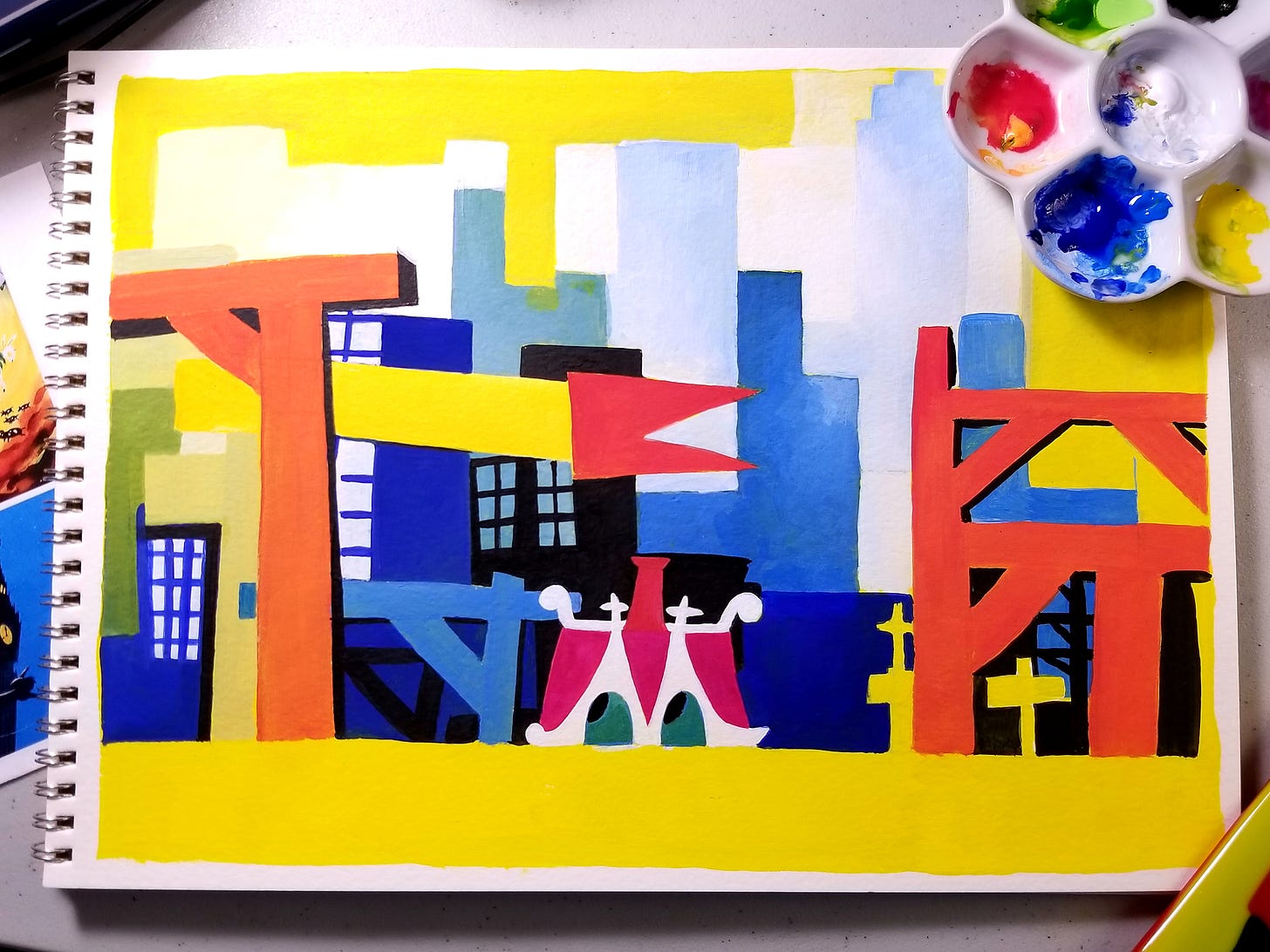
Technique
According to Blair, drawing is the fundamental tool of design, and the hardest stage of the process. She would begin her concept sketches by making many small doodles. Most of her ideas would be discarded, but a few stronger sketches would be developed further. She cautioned artists to create many iterations but then to choose only the most creative, worthwhile sketches as the foundation for further work; all other work is wasted effort.
From here, Blair appears to lay down major shapes rather quickly using unusual color combinations (usually variations on a few, contrasting colors), and ending with wispy line work and drybrush on top.
Learn more about how to use gouache in my Free Articles Collection.
Mary Blair castle activity sheets
One of the workshop participants is a full-time art teacher, and she kindly shared an activities packet that she uses to teach kids about Mary Blair. Using dice rolls and coloring templates, students create their own it’s a small world-style castle, just like Mary Blair. You can find and download that packet here.
Thank you, Tracey, for the sheets!
Student work
I was so pleased with the work created by my workshop students! Two people, myself included, made direct copies of Mary Blair artwork (see Sarah’s Peter Pan flying ship), while the rest interpolated her style into personal projects. Check out the student projects below:
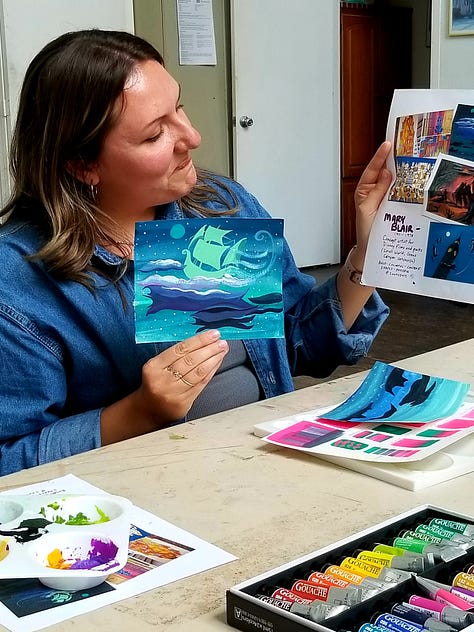
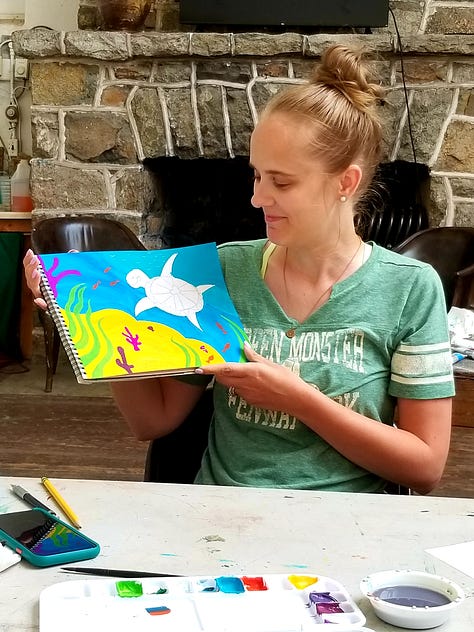
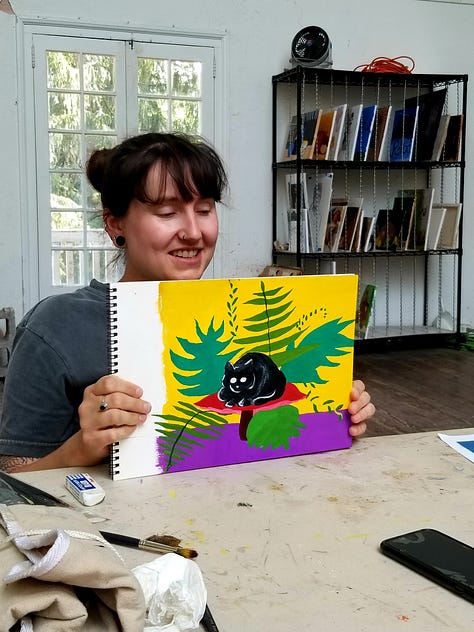
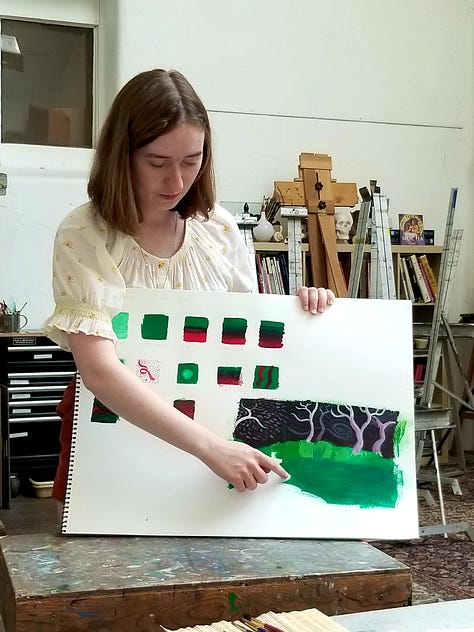
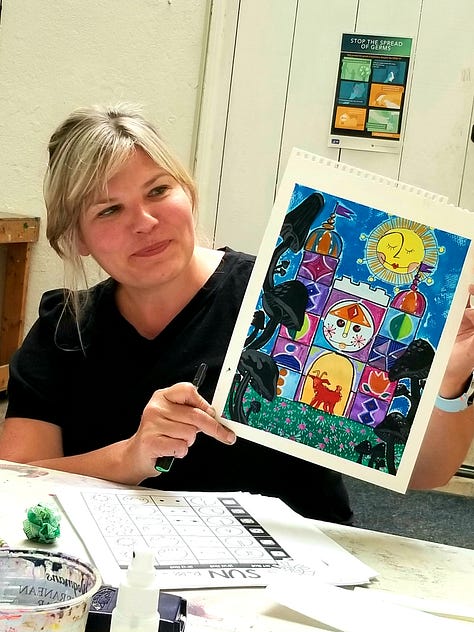
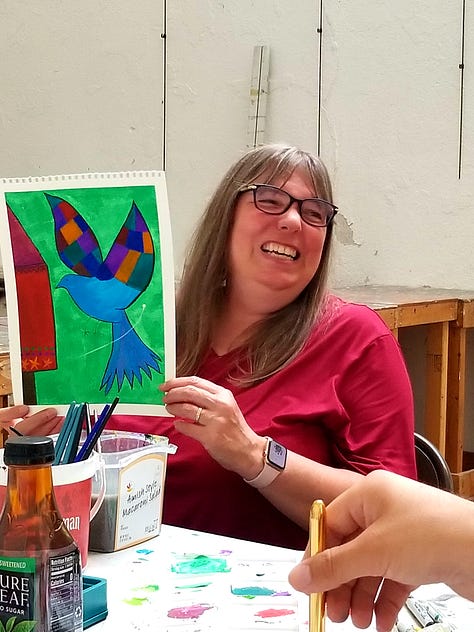
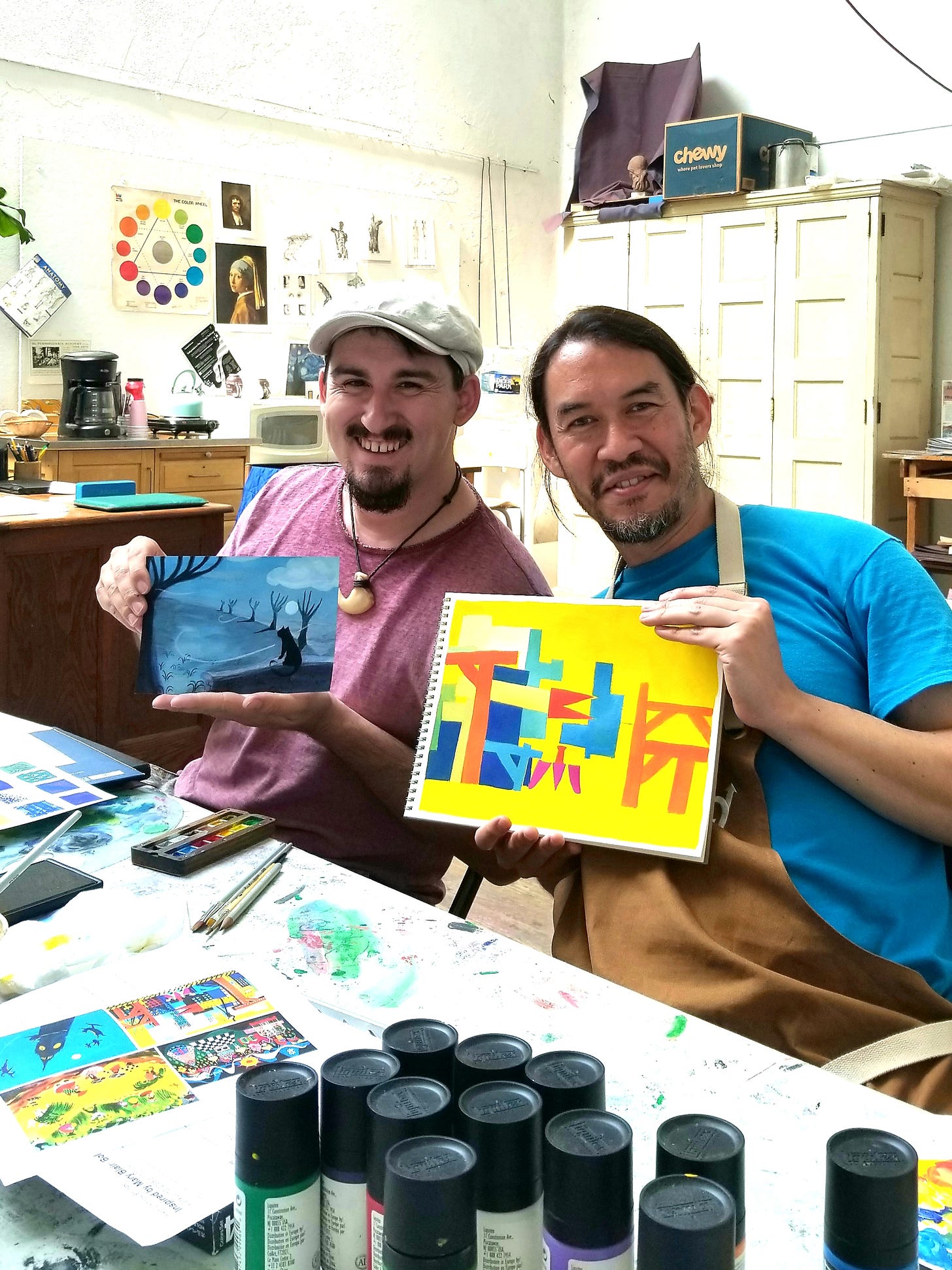
Lunch at the Cafe
Special shout-out to Life’s Patina Cafe, which has become a recurring, special aspect to workshops at Historic Yellow Springs in Chester County, PA. For a reasonable price you get excellent homemade food and a comfy atmosphere. My lunch was quiche (not pictured), tomato soup, a lemon-blueberry scone with candied rosemary on top, and coffee. I normally don’t even eat scones or quiche, but I love them at Life’s Patina Cafe!
Set the mood
To help set the mood for the Mary Blair workshop, I played relaxing, 1950s popular music ballads in the background. We began with the track It’s Magic by Doris Day, and Apple Music took it from there.
More workshops!
I hope you enjoyed learning more about the life and art of Mary Blair. Don’t forget to check out the previous article that covers these things in even greater depth.
And I hope you’ll join me for an upcoming workshop—sketching at a historic wagon factory; or, making portraits of animals; or, learning to draw with pen and ink… it’s all here on my Linktree!








So fun to see how your workshop played out! I really like how you describe the atmosphere, including the lunch, to transport us to the day. That’s what Mary’s evocative art does for me, like a portal to a fantastical realm of color harmony. I looove that ship painting from the book and it’s so cool to see how your students interpreted her work for their own pieces. I’m going to hit the Mary Blair exhibit in SF before it closes in September!
Right now I have two books from the library featuring Mary Blair's work and I also got the women animators book to reread. Thank you for giving me the impetus to study her work further. I love looking at her images - they are full of joy. I hope you will do the workshop again, I would love to attend.